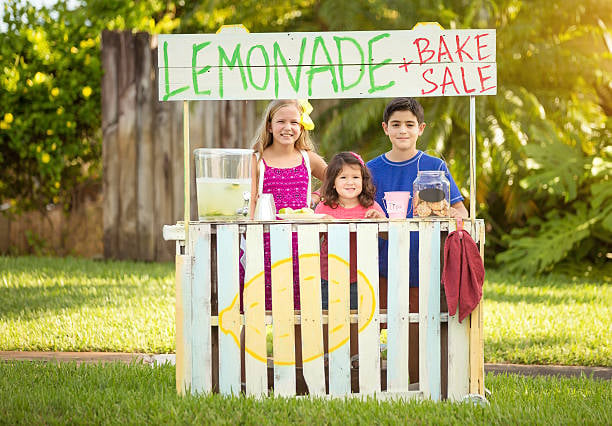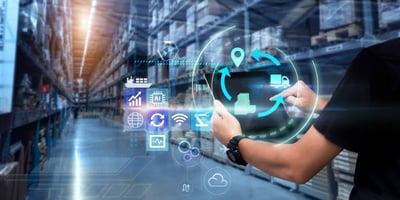December 22, 2024
 by Yash Chawlani / December 22, 2024
by Yash Chawlani / December 22, 2024

When searching for new prospects, it’s easy to overlook the potential of customers already in your sales funnel. But why is it essential to focus on existing customers?
Re-engaging with your current customer base is a highly cost-effective strategy that can significantly boost your business. These customers already know and trust your brand, making them more receptive to new offers.
This is where cross-selling and upselling come in—two powerful sales techniques designed primarily for existing customers with a shared goal: increasing revenue.
Sales enablement software enhances these strategies by providing sales teams with the insights and tools needed to identify opportunities, tailor personalized offers, and maximize customer lifetime value.
Upselling involves encouraging customers to purchase a higher-end or more expensive version of a product or service they are considering. In contrast, cross-selling focuses on suggesting complementary or related products to enhance the primary purchase.
Suppose a customer wants to buy a car from you. If you offer them an upgraded model for more money, it’s an upsell. If you offer them car insurance, too, it’s a cross-sell.
Upselling means selling to your existing customers and getting them to buy more. It’s also a practice of convincing customers to buy more expensive products related to the ones they originally intended to buy.
Usually, the final sale is:
Upselling is one of the smartest ways to sell more. In e-commerce maketing, upselling is a better practice to increase revenue.
You can encourage customers to purchase more expensive products while browsing your store or buying other products. Typically, retailers upsell by displaying higher-value products next to what they’re buying.
more affordable than acquiring a new customer, upselling provides a cost-effective way to boost revenue.
Source: bdow
Upselling isn't typical, and businesses need to put extra effort into upselling. Here are some useful upselling examples.
When purchasing online, users often hit a wall at the checkout page only to find the outrageous shipping costs. If they can't afford high shipping costs or are unwilling to pay for them, they usually abandon the cart and leave the website.
You can leverage an upsell opportunity here by offering free shipping for orders over a certain amount (for example, $75). If the user doesn’t spend $75, they see $10+ of shipping and feel obliged to pay more.
Domino's Pizza is a great example of an upsell concept. Domino's doesn't waste time! It goes over and above expectations and keeps rolling out rewards to enable customers to buy more from them. Customers who usually order a medium-sized pizza and a drink might order large pizzas and desserts just to earn free points.
The VIP plan inevitably draws more users as it offers the most value. Recommending this package helps you upsell instead of just selling. You can subtly influence the user's attention and help them choose something they usually skip. It's a bold move, but it's a risk worth taking. Your goal is to get your customers to check out your premium options and help them decide whether it's worth buying.
The deal of the day also enhances your credibility. It may be the psychological effect of scarcity or more fun to come back the next day or week to check out the new deal. Whatever the reason, daily deals are a powerful tool for increasing conversion rates.
When creating daily deals, look for products that fly off your shelves and promote them. For example, if you notice that your sweater sales are growing, feature your best sweaters. Again, if last summer's soccer gear didn't sell well, feature different products this summer.
Cross-selling is a sales technique that encourages existing customers to buy additional products. It’s often used at checkout, allowing customers to purchase accessories, related products, or extended warranty coverage.
Suppose you want to sell someone a garbage disposal. You can offer a service to install it or some kitchen appliances compatible with the garbage disposal. With a solid customer base, it’s worthwhile to cross-sell products that complement the main product they already use.
This is a natural progression from upselling. However, instead of selling an expensive product, you sell a different but related one from the same range.
Cross-selling can be observed in an everyday sales scenario. Here are some of the most common cross-selling examples.
Encourage customers to add more products to their orders. Amazon, for example, offers a range of products often purchased with the selected item.
Giving customers multiple buying methods increases sales and improves your brand value. You can achieve this by splitting your shopping cart page layout into two to three parts and filling them with your most popular products and recommended product combinations.
When you cross-sell, you need to show how customers benefit from the purchase. However, if you force them to buy another product than they want, you will likely lose their trust. So, it’s better to offer your customers trial products with their orders.
What comes after customers buy a product? Most likely an additional purchase. For example, if you sell cameras, what else would you recommend to the customer to enhance their experience after they purchase them? Batteries, tripods, card readers, and other accessories could be included.
Another way to get customers to purchase multiple items is to offer recommendations based on what other customers usually buy. Checkout pages are particularly effective in promoting this strategy.
For example, you have a bike accessories store. You can create a promotion on the checkout page focusing on accessories that other customers who bought the same bike also purchased.
Cross-selling and upselling are simple ways to convert cold traffic and generate more revenue. A solid cross-selling and upselling strategy helps retain customers and reduces your business's churn rate. Below are 5 reasons why both strategies work every time.
Marketers sometimes prefer to keep their existing customers rather than attract new ones.
Loyal customers should be your priority. After all, they’re already happy with your customer service and not looking for a better deal. They like how your brand consistently meets their expectations. Either way, if you can retain customers, it’s more cost-effective than acquiring new ones looking for the cheapest option.
Upselling and cross-selling strengthen customer relationships. You need to show your customers that you're not out to take their money and run, but you care about their interests. For example, if you’re selling a bicycle, your customers will appreciate your effort if you offer them a helmet and other cycling gear.
Upselling and cross-selling strategies increase sales and contribute to customer lifetime value (CLV).
By leveraging personalized, cross-channel experiences based on an individual customer’s actions, you can substantially increase your average CLV without offending your existing or potential customers.
In any industry, upselling and cross-selling are indispensable means to achieve a higher ROI for businesses. Here are some ways you can get the maximum attention from your customers:
Cross-selling and upselling are essential for business success. Enthusiastic customers can provide valuable references and support and help acquire new customers. These relationships create an upward spiral in which new and existing customers help each other and grow into larger client pools.
The right cross-sell or upsell strategy helps customers make purchasing decisions faster. For example, if your customers buy clothes online, you can offer shoes or jewelry.
However, don’t force customers to buy; instead, give them more options of what they might want to purchase and provide them with a seamless customer experience.
While cross-selling and upselling can be powerful strategies for increasing revenue, they come with several challenges that businesses need to navigate carefully. Here are five key challenges in detail:
Customers may feel that cross-selling and upselling are pushy or intrusive, leading to resistance. If the additional products or upgrades are not seen as relevant or valuable, customers may view the attempts as a sales tactic rather than a genuine offer to enhance their experience. This can lead to dissatisfaction and even damage trust in your brand. To overcome this challenge, it's crucial to ensure that your offers are personalized and based on the customer's needs, preferences, and previous interactions.
Presenting too many options or aggressively pushing for upgrades can overwhelm the customer, causing them to disengage or abandon the purchase altogether. This can particularly be a problem if upsell or cross-sell offers are introduced at the wrong moment, such as during the checkout process when customers are focused on finalizing their purchases.
If the recommended product or service doesn’t align with the customer’s actual needs, it can lead to disappointment and even cancellations. This can occur if the sales team doesn’t have enough insight into the customer’s goals, preferences, or pain points. To mitigate this risk, businesses need to invest in understanding the customer through data collection, surveys, and active listening. Sales enablement tools or CRM systems can provide valuable insights into a customer’s past behavior, making it easier to offer relevant solutions.
If customers don’t trust the recommendation or feel that the upsell or cross-sell is being made purely for financial gain, they are likely to reject it. Building trust is critical, as customers need to feel that you have their best interests in mind, not just your bottom line. To overcome this challenge, focus on building a long-term relationship with your customers based on transparency and trust.
For cross-selling and upselling to be effective, sales teams need to have the proper training and tools to identify opportunities and make relevant recommendations. Without the right resources, salespeople may miss opportunities or push the wrong products, leading to poor results. Invest in comprehensive sales training and provide your team with sales enablement software to identify cross-sell and upsell opportunities. Tools that track customer behavior, history, and preferences can help sales teams make informed recommendations.
When done right, these strategies can enhance the customer experience, build loyalty, and maximize the lifetime value of every client. Here are five practical ways to get started with cross-selling and upselling.
Why are some companies so good at up-and-cross-selling and others not? Let's find out with these six best practices.
It's sometimes difficult to know when and where to sell. This is because your customers rely on their internal motivation when making purchasing decisions. They don't want you to force this decision on them.
So when should you recommend a related product to a customer? Should you do it before, during, or after purchase?
Answering this question involves a lot. It depends on the purchasing process, type of customer account, available customer information, and the customer's stage in the sales funnel.
Upselling works better than cross-selling. Once a customer decides to purchase a product or service—especially if it's a bigger ticket item—they may not want to be distracted by another product or service.
However, cross-selling is sometimes the best way to sell. For example, when someone buys shampoo, it's an excellent opportunity to have them choose conditioners, frizz-control products, curl-enhancing sprays, and so on, and offer them more buying options for a fulfilling and delightful purchase.
As you up or cross-sell, keep your offers relevant to what they've already bought. This way, you avoid frustrating customers and lost business opportunities.
For example, when checking out an Amazon order, after you confirm your payment information, Amazon automatically suggests related products. Similarly, the hotel you frequently stay at offers a discount on your next visit if you book another hotel for the coming weekend. That’s how smart marketers do business!
Look for patterns in your previous buyers to capitalize on as you approach new prospects. Assess:
Decoding customer journey analytics is a common way to increase conversion rates and profits – something most successful brands do.
Let's say you sell beauty products. After a customer buys your shampoo or conditioner, find out how long it takes for them to come back and buy the same product. You can come up with offers to convince them to buy from you again based on this journey.
If you gear your sales process toward delivering customer rewards, you probably wouldn’t see the need to remodel. You may be doing better than most of your competitors. However, if you don't usually offer your customers perks to purchase your product, you’re missing out on an opportunity to build customer loyalty.
Unfortunately, there is no one-size-fits-all reward-based loyalty program. It all depends on your customer's buying behavior. The first step should be to look closely at what people buy and why.
The more they purchase, the more rewards you should give them. Train your sales reps to use loyalty offers for their upselling and cross-selling efforts effectively.
The key to reducing cart abandonment is convincing customers that they’re almost ready to complete an order. People confident they’re close to purchasing are much more likely to complete the checkout process.
Also, don’t be afraid to show customers what’s missing in their cart. Many products not relevant to what the customers originally visited to purchase can distract prospective customers.
You can evaluate abandoned checkouts using methods such as exporting Shopify data and reminding customers what they initially came for. This can persuade them to make a purchase after all.
Improving your follow-up process is another way to maximize customer lifetime value. For example, if someone just bought a new car from you, chances are they’re looking to purchase a home or life insurance soon.
Consumers with a new checking or savings account might consider investments, IRA accounts, and other financial products. These cross-selling and upselling opportunities bring huge profits because you already know what customers want. All you have to do is ask.
Today’s customers have an abundance of options for spending their time and money, and the market is more competitive than ever. In such an environment, it’s crucial that your customers feel valued and have a great experience, or they will quickly turn to other options.
This is why mastering upselling and cross-selling is so important—they should add value to your customer's experience, not detract from it. The key is to strike a balance—offering relevant, personalized products or upgrades at the right time without overwhelming or pressuring the customer.
Learn more about building a solid sales strategy to increase sales and boost revenue.
This article was originally published in 2021. It has been updated with new information.
Yash Chawlani is the Founder of Marveta, a result-oriented digital marketing agency. He specializes in SEO and Content Marketing and helps various B2B and SaaS companies with top-notch marketing strategies.
Generative AI, the advanced technology behind ChatGPT, Google's Bard, DALL-E, MidJourney, and...
 by Reetu Kainulainen
by Reetu Kainulainen
Unlocking the door to business growth hinges on customer satisfaction. We are not just saying...
 by Sahil Ahuja
by Sahil Ahuja
From personalized customer experiences to efficient supply chain management, generative AI is...
 by Carl Bleich
by Carl Bleich
Generative AI, the advanced technology behind ChatGPT, Google's Bard, DALL-E, MidJourney, and...
 by Reetu Kainulainen
by Reetu Kainulainen
Unlocking the door to business growth hinges on customer satisfaction. We are not just saying...
 by Sahil Ahuja
by Sahil Ahuja


